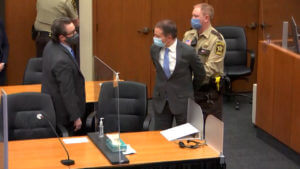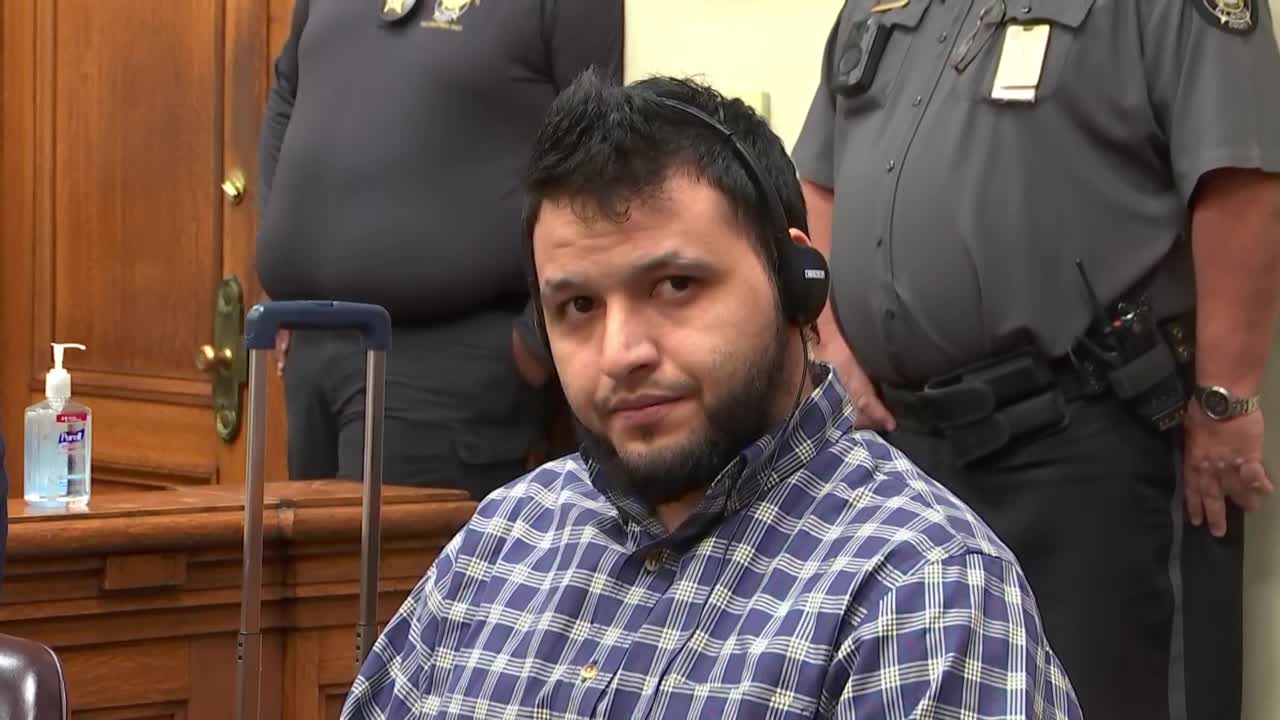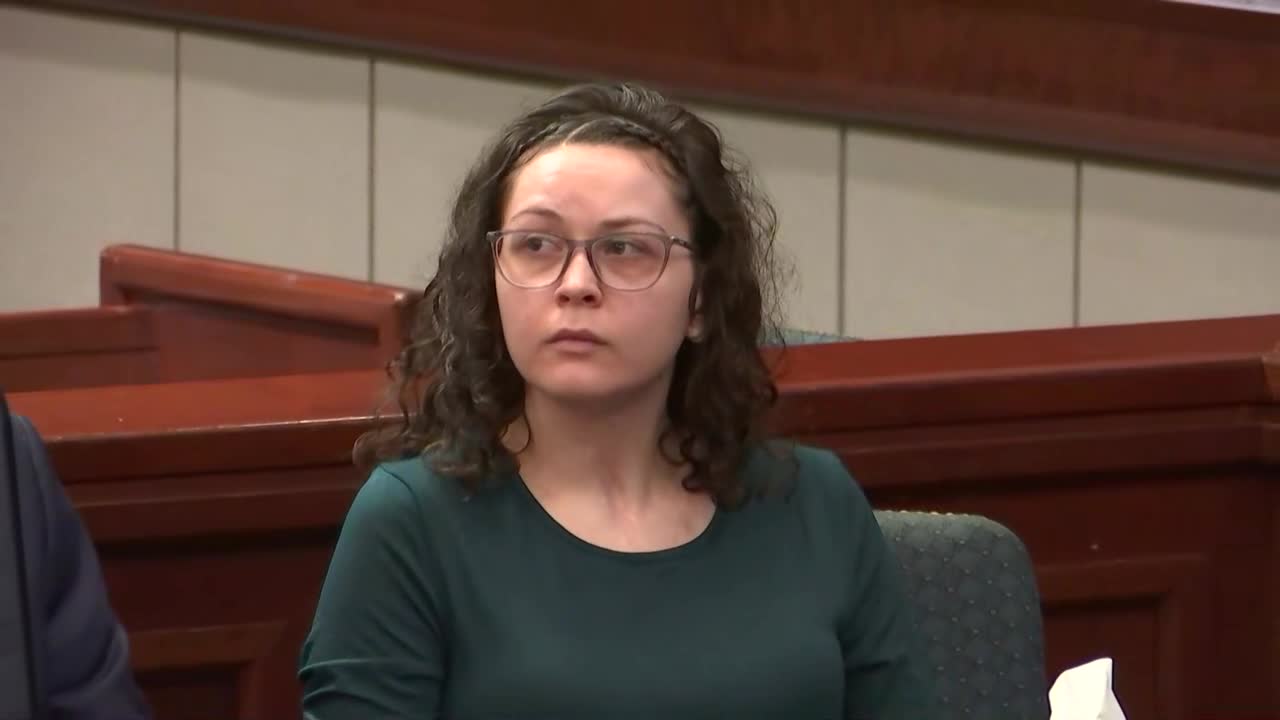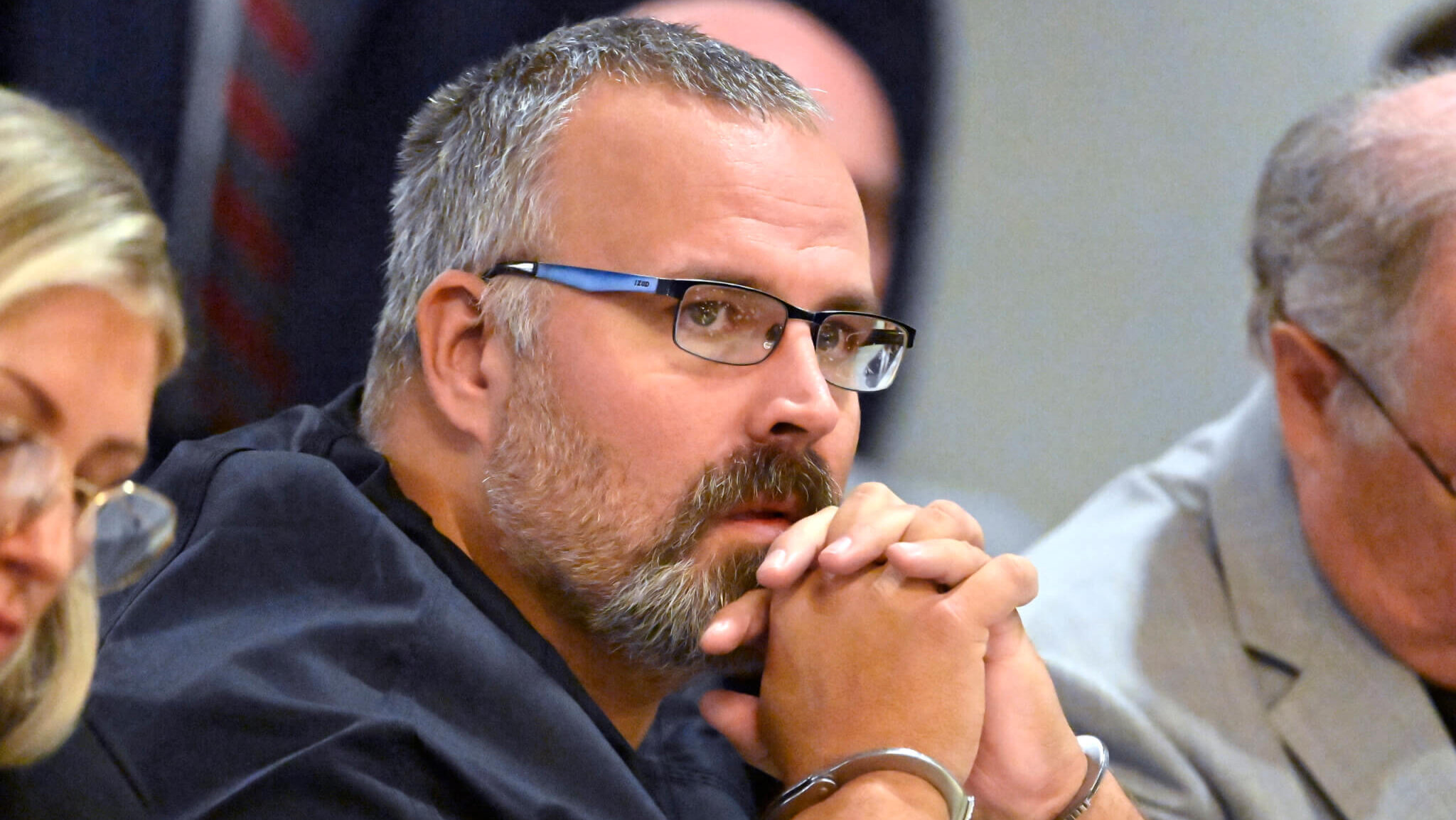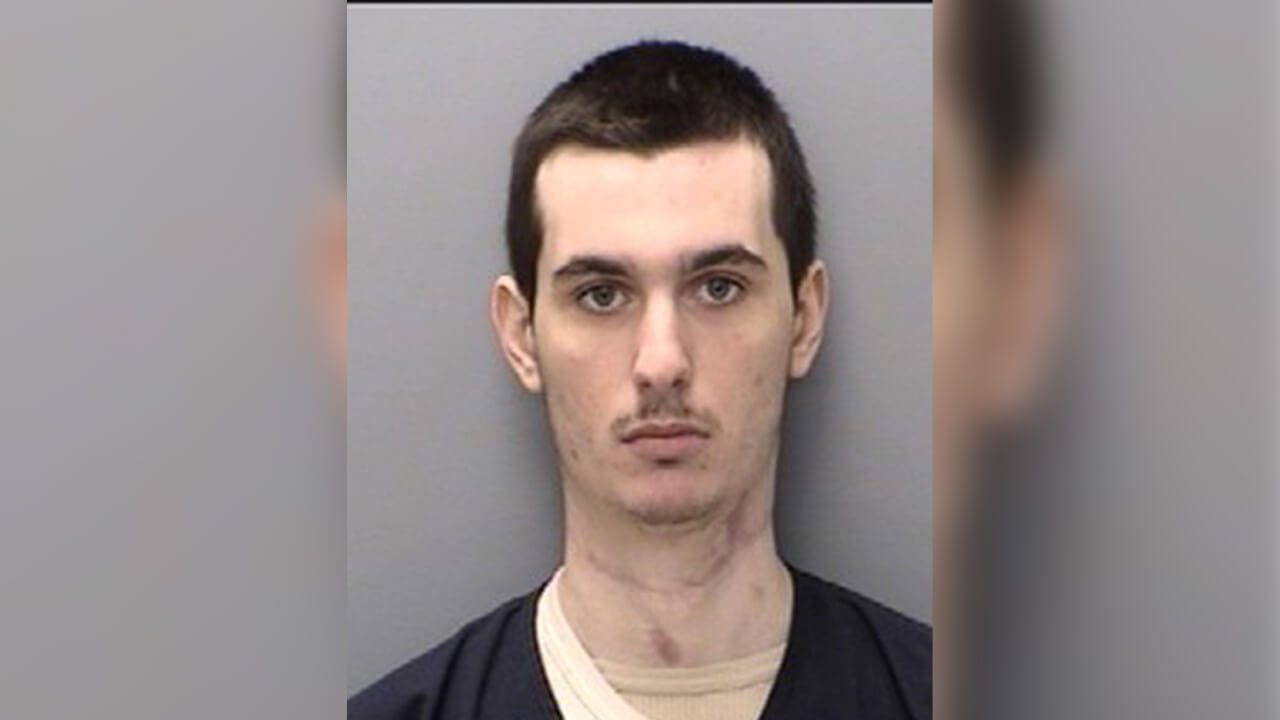DAILY TRIAL UPDATES
DAY 12 – 12/23/21
- After deliberating for just over 28 hours, a Minnesota jury found Kim Potter guilty of all charges:
- Manslaughter in the 1st degree: GUILTY
Manslaughter in the 2nd degree: GUILTY
- Manslaughter in the 1st degree: GUILTY
- Potter was immediately taken into custody. Bail has been revoked. A temporary sentencing date of February 18 has been scheduled.
- WATCH: 12/23/21 Kim Potter Guilty of All Charges
DAY 11 – 12/22/21
- Deliberations ended Wednesday without a verdict or any other communication from the jury.
- Unlike the two previous days of deliberations, there were no questions or requests from the panel, which has been deliberating for more than 24 hours over 3 days.
- The jury has been given a laptop and a thumb drive with all the exhibits, they also have access to Potter’s duty taser and gun, and a copy of the jury instructions.
- They have been told that if they want to rehear testimony they must make a request and the testimony would be read back to them in the courtroom.
- The jury is sequestered and staying at a local hotel while it is considering its verdicts. If there is no verdict tomorrow it is unclear how the judge will manage their sequestration over the holiday.
- Judge Chu has vowed to let the jurors spend December 24, Christmas Eve, with their families and has told them if they are not “finished,” they would return on Monday December 27.
- While the jury’s note on Tuesday suggested a possibility of a deadlock, they have continued to deliberate without further indication of a stalemate.
- A small but vocal group of protesters has been standing vigil outside the courthouse chanting Daunte Wright’s name. Their shouts cannot be heard from the 18th floor where jurors are deliberating. They are escorted in and out of the building by deputies and do not use the same elevators and hallways used by the public, therefore it’s unlikely that they are in any position to see the demonstrators either.
- Jurors will resume their deliberations Thursday December 23 at 9:30 ET.
DAY 10 – 12/21/21
- Jurors concluded a full day of deliberations and nearly 15 hours of deliberations over 2 days without reaching a verdict. The jury will resume deliberations tomorrow at 9:30 ET.
- The jury sent a note to the court with 2 questions that were read at about 5:30 ET.
- Question #1: If the jury cannot reach consensus, what is the guidance regarding how long and what steps should be taken? A: The judge reread a paragraph from the jury instructions.
- Question #2: Can the zip ties be removed from exhibit 199, Potter’s gun so it can be held out of the evidence box?A: The Judge agreed to let the jurors hold the gun and told them to give the gun, which is secured by zip ties in a box– to the deputy and return the gun when they were finished examining it.
- Potter’s defense team objected to the rereading of the instruction. Paul Engh argued that it put too much emphasis on one part of the jury instructions when jurors should consider the instructions as a whole. Engh also objected to the removal of the gun from the box.
- Prosecutor Matthew Frank Agreed with the court’s handling of both questions.
- Judge Chu overruled the defense’s objections.
- Jurors deliberated for another 90 minutes before calling it quits for the night.
- This brings to 3 – the total number of questions the jury has posed since deliberations began. On Monday, jurors asked for the date that Potter was interviewed by her expert Dr. Laurence Miller. The judge told them that they would have to rely on their collective memories to resolve that question.
DAY 9 – 12/20/21
- The jury hears closing arguments:
- Prosecutors urged jurors to convict Kim Potter because she was reckless and culpably negligent in the way she handled her firearm. She knew the risks associated with weapon confusion, knew the danger of pointing a firearm and pulling the trigger and disregarded the risks when she shot and killed Daunte Wright.
- KP was trained every day for 26 years on how to use her firearm and for 19 years on how to use her taser. She drew her firearm with her right hand – her gun hand and fired into a car with people in it and 2 other officers around it. She knew the risk and she ignored them.
- Case is not about saving an officer from being dragged. Ofc. Johnson was not afraid of being dragged and did not testify that he was afraid.
- We don’t have to prove that KP intended to kill anyone. KP took specific action that put everyone at risk. She held the gun in front of her face for several seconds and did not confirm what she had before she fired.
- The decision to use taser was a bad one. This was not an ‘oopsie,’ this was one collassol screw up a blunder of epic proportions.
- There are major differences between a gun and taser – she chose to ignore them.
- She’s sorry – sympathy has no place in this case.
- WATCH: 12/20/21 The Death of Daunte Wright: Prosecution Closing Argument
- Defense: Prosecutors are misleading you by playing the bodycam videos in slow motion – they should be played in real time to accurately depict the stress and struggle of the situation.
- Wright caused his own death, when he chose to flee from officers. He set off the chain of events that caused KP to act to save herself and the other officers from danger.
- DW tried to flee because when police discovered the outstanding warrant – he knew he was guilty.
- KP did not act recklessly with her firearm because she did not know she was holding a firearm. She cannot handle a firearm recklessly if she does not know she had one.
- KP made a mistake – a mistake is not a crime. We do not put people in prison for mistakes. KP is a peaceable, law abiding person who was a good police officer.
- Defense calls for a mistrial after their repeated objections to prosecutor Matthew Frank’s rebuttal were overruled. Defense attorneys argue Frank’s rebuttal was another summation. They objected on the grounds that his rebuttal was beyond the scope and misstated the law. Judge denes mistrial motion.
- WATCH: 12/20/21 The Death of Daunte Wright: Defense Closing Argument (part 1)
- WATCH: 12/20/21 The Death of Daunte Wright: Defense Closing Argument (part 2)
- WATCH: 12/20/21 The Death of Daunte Wright: Prosecution Delivers Rebuttal Argument
DAY 8 – 12/17/21
- Kim Potter takes the stand in her own defense and breaks down while recounting the shooting of Daunte Wright
- Potter said Ofc. Anthony Luckey, whom she was training was struggling with Wright trying to arrest him on an outstanding warrant when things just went “chaotic.”
- She said they were trying to keep Wright from driving away, she recalled seeing a look of fear in Ofc. Johnson’s face before she fired.
- She remembers saying ‘taser, taser, taser’ before firing then heard Wright say, ‘you shot me.’
- Potter said Luckey noticed Wright had an air freshener hanging in the rear view mirror and expired tags– not something that she would have stopped him for but once they discovered the outstanding bench warrant she said they were required to arrest him.
- The 49-year-old veteran officer had never discharged her firearm or deployed her taser while on duty prior to shooting Wright.
- On cross Potter broke down sobbing and apologized, saying ‘I’m sorry – I’m sorry it happened. I’m so sorry. I didn’t want to hurt anybody.’
- Potter conceded that during Wright’s struggle with Luckey, she never saw Wright with a weapon, nor did she hear Wright make any threats against the officer.
- On cross Eldridge suggested Potter’s behavior was not consistent with having saved Johnson’s life but more consistent with shooting Wright by mistake. Potter agreed that she did not want or plan to use deadly force that day.
- WATCH: 12/17/21 Reactions to Kim Potter Testimony
DAY 7 – 12/16/21
- State rests Thursday morning in front of jury after calling its last witness Wednesday afternoon.
- Judge Chu denies the defense’s motion for judgement of acquittal.
- Judge Chu says she will allow the defense’s request for a jury instruction on authorized use of force. “Had the state not disputed her intended use of a Taser this wouldn’t be a problem,” Chu said, “but the state’s expert even said it wasn’t appropriate.” The instruction will only apply to the Taser and wouldn’t constitute a complete defense, Chu said.
- Defense calls six witnesses: Use-of-force expert Steve Ijames; former Brooklyn County Police Chief Timothy Gannon, who says Potter’s intended use of a Taser and actual use of deadly force were both reasonable; and four character witnesses who testified to Potter’s “sterling” reputation for being peaceful and law-abiding.
- Ijames, a retired police chief and trainer with 43 years of law enforcement, disputes finding of the state’s use-of-force expert.
- Says it was reasonable for Potter to use Taser because it had the greatest likelihood of stopping Wright without causing death or great bodily harm
- Agrees outstanding warrant is significant. Calls it a “dereliction of duty” that could lead to disciplinary action for officers to not make arrest. On cross, agrees it’s also a dereliction of duty to use unreasonable force.
- If former BCPD Sgt Mychal Johnson were at risk of death or great bodily harm because his body was half inside the car as car was about to drive away, he says it would justify the use of deadly force. Says this opinion is based on Johnson’s testimony and the hypothetical scenario of an officer knowing that a fellow officer was going to be dragged/at risk of death or GBH.
- State tried to prevent him from offering an opinion on deadly force as a last-minute disclosure. Says the defense initially asked him to focus solely on Taser use and only asked him to offer an opinion about deadly force after Johnson’s testimony.
- Did not use “reasonable officer” standard in his report. Agrees he did not try to assess if a reasonable officer in KP’s position would have been aware of Johnson’s position when she fired gun.
- In his report, he said fact that Potter pulled the trigger just once suggests she intended to use a Taser and therefore did not perceive the threat of death or great bodily harm.
- Says he is not being paid for his testimony as is his policy in criminal cases when someone’s freedom is at stake.
- WATCH: 12/16/21 Minnesota Cop’s Fatal Mix-Up: Trial Day 7
DAY 6 – 12/15/21
- Daunte Wright’s father tears up on the witness describing how he misses his son and enjoyed watching him embrace fatherhood.
- BCPD use-of-force trainer Sgt. Mike Peterson testifies on cross that deadly force is a reasonable response to the risk of death or great bodily harm; says use of Taser would be appropriate in circumstances similar to what Potter faced; says BCPD officers have used Tasers on people in cars.
- Jury hears from the state’s use-of-force expert, University of South Carolina Associate Law Professor Seth Stoughton, who testified for the state in Derek Chauvin’s trial. Among his conclusions:
- A reasonable officer in Potter’s position would not have perceived a threat of death or serious injury (great bodily harm) from Wright’s conduct, making her use of deadly force inappropriate, excessive and disproportionate.
- Wright posed a threat of escape, which would not warrant use of deadly force. Says there were “tactical” benefits to letting him go and finding him later since they had his name and address, testimony the defense argued opened the door to evidence of all the times Wright fled police or skipped court appearances. Judge disagreed. On cross, Earl Gray presses Stoughton on what the officers should have done. He responds, “use reasonable force.”
- Potter’s conduct that factored into his conclusion:
- Her decision/intent to use a Taser (less than lethal force) suggests she didn’t perceive a threat of death or serious injury that would justify deadly force.
- Her own words after the shooting – I’m going to prison; I didn’t mean to do that – suggest she didn’t perceive threat of death or serious injury that would justify deadly force.
- She created a threat to officers and passenger in choosing to discharge a weapon into the car.
- She created a threat to safety of the public/bystanders in discharging the weapon on the driver of a car, creating the risk of incapacitating the driver, which could turn the car into an “unguided hazard.”
-
- He qualifies by saying that if Potter knew that Sgt. Mychal Johnson was in the car but did not know Johnson had stopped the vehicle from running, then deadly force would be proportional, but it would still be inappropriate because of the threat of harm it would pose to officers and passengers in the car. And once she yelled Taser, she should have known it was a signal to the other officers to back off.
- Nevertheless, he says that as soon as Johnson exited the vehicle, the risk of death or serious injury from being dragged no longer existed.
- Evidence leads him to conclude that Potter was not aware Johnson was in the car because a reasonable officer would not assume that an officer would reach into a car to the extent Johnson did since it goes against best practices. On cross, says Johnson’s testimony did not factor into his conclusions.
- Witness says the Taser use under these circumstances was inappropriate, unreasonable and inconsistent with generally accepted practices because if successful, it could have incapacitated Wright and turned the car into an “unguided hazard.” If it didn’t incapacitate him, it would have created a greater incentive for him to flee.
DAY 5 – 12/14/21
- The prosecution’s case moves into the investigation by state agents and forensic scientists with Minnesota’s Bureau of Criminal Investigation with an emphasis on Potter’s use of weapons.
- Medical examiner describes the deadly effects of the hollow-point bullet that passed through Wright’s chest — tearing through his lungs and heart — before mushrooming in between his ribs, all causing significant blood loss that could have rendered him unconscious and on the brink of death in a matter of seconds.
- On cross, medical examiner Dr. Lorren Jackson agrees it’s possible that Wright was conscious for up a minute after shooting. Jackson also renders cause and manner of death, gunshot wound to the chest by homicide.
- BCA Agent Sam McGinnis describes the differences between a Glock and a Taser, testimony that could speak to the state’s contention that Potter acted recklessly, an element of manslaughter. And he testifies that Potter did not do required check of Taser before her shift on day of shooting or two days prior. On cross, McGinnis says he does not know how often officers followed the protocol.
- Judge Chu rules that prosecutors cannot ask police witnesses to describe what body camera video shows. Ruling comes after a lengthy sidebar over prosecutor Joshua Larson’s attempt to elicit testimony from BCA special agent Brian Petersen that might have impeached former BCPD Sgt. Mychal Johnson’s testimony that Wright might have dragged Johnson with his car had Potter not stopped him.
- After ruling puts significant limits on what state can ask Petersen, questioning turns to what’s more reliable, a body camera or a person’s observations? Petersen agrees with both sides’ interpretations.
- Judge Chu pleads with lawyers to use one-word objections as testy challenges to witness testimony – mostly, from the defense — keep piling up.
DAY 4 – 12/13/21
- The prosecution’s case moves into the investigation by state agents and forensic scientists with Minnesota’s Bureau of Criminal Investigation with an emphasis on Potter’s use of weapons.
- Medical examiner describes the deadly effects of the hollow-point bullet that passed through Wright’s chest — tearing through his lungs and heart — before mushrooming in between his ribs, all causing significant blood loss that could have rendered him unconscious and on the brink of death in a matter of seconds.
- On cross, medical examiner Dr. Lorren Jackson agrees it’s possible that Wright was conscious for up a minute after shooting. Jackson also renders cause and manner of death, gunshot wound to the chest by homicide.
- BCA Agent Sam McGinnis describes the differences between a Glock and a Taser, testimony that could speak to the state’s contention that Potter acted recklessly, an element of manslaughter. And he testifies that Potter did not do required check of Taser before her shift on day of shooting or two days prior. On cross, McGinnis says he does not know how often officers followed the protocol.
- Judge Chu rules that prosecutors cannot ask police witnesses to describe what body camera video shows. Ruling comes after a lengthy sidebar over prosecutor Joshua Larson’s attempt to elicit testimony from BCA special agent Brian Petersen that might have impeached former BCPD Sgt. Mychal Johnson’s testimony that Wright might have dragged Johnson with his car had Potter not stopped him.
- After ruling puts significant limits on what state can ask Petersen, questioning turns to what’s more reliable, a body camera or a person’s observations? Petersen agrees with both sides’ interpretations.
- Judge Chu pleads with lawyers to use one-word objections as testy challenges to witness testimony – mostly, from the defense — keep piling up
DAY 3 – 12/10/21
- Testimony of Interim Brooklyn Center Police Chief Tony Gruenig, who took over after Matthew Gannon resigned as chief amid criticism of the department’s handling of protests. Gruenig describes timeline of events at the scene on day of shooting.
- Testimony of Bureau of Criminal Apprehension special agent in charge Charles Phill, who supervises the force investigation unit. He describes timeline of events at the scene after Gruenig called in BCA to investigate.
- Judge Regina Chu warns prosecutors to not introduce any more exhibits that could be considered cumulative (legal term for redundant to point of prejudicial) after the defense keeps objecting to more body camera video and photos of the scene during Mychal Johnson’s testimony.
- As tempers flare among the lawyers amid objections, Chu issues a stern reminder to both sides to make objections using one word, then wait to get on headphones to argue their basis.
- State witness Mychal Johnson — the shift supervisor who assisted Potter and her trainee, Anthony Luckey, in the traffic stop of Daunte Wright — offers testimony that could benefit the defense.
- On direct, Johnson describes how he got his hands on Wright and put Wright’s car in park as Wright fought against him. Johnson said he let go of Wright after Potter yelled “Taser,” a customary response to protect himself from the device’s probes. Wright regained control of the car after Potter shot him and fled.
- Jury sees video of Johnson trying to comfort a distraught Potter while he radios for backup. Johnson assures Potter that Wright was trying to drive away with Johnson inside the car, a statement that Johnson failed to relay to an officer who interviewed him.
- In another clip of Johnson’s body cam, Potter’s sobs and laments continue. She resists handing over her service weapon to Johnson until Johnson gave her his gun in exchange. She also asks for her union rep.
- Later, another officer expressed concern to Johnson that Potter would harm herself. Jury sees video of Johnson removing ammunition from the gun he’d given Potter in response to concerns she’d harm herself.
- On cross, Johnson agrees with defense lawyer Earl Gray that Potter had the right to use force to keep Wright from fleeing arrest.
- Johnson further agrees with Gray that he could have been harmed or killed if Wright had succeeded in driving off with Johnson in the car.
- Johnson testifies that under “state statute,” Potter had a right to use a firearm to stop Wright and agrees with Gray that she had the right to use deadly force to protect herself and fellow officers from the threat of death or serious injury.
- Things grow tense on redirect as Frank presses Johnson on what he was able to achieve without drawing his gun, including putting the car in park. Johnson agrees with Frank that Wright’s car did not drag or injure him as he drove off and that the car only took off after Potter shot Wright. Johnson also acknowledges his respect and admiration for Potter as a colleague.
- On recross, Johnson agrees with Gray that a car is considered a weapon. On re-redirect, Johnson agrees BCPD has a policy against using a Taser on someone operating a vehicle, then agrees with Gray that Wright did not appear to have control of the car (was not operating the vehicle) when Potter tased him.
DAY 2 – 12/9/21
- Testimony shifts from the shooting of Daunte Wright to the car crash moments later and its chaotic aftermath, in which none of the responding officers knew about the officer-involved shooting.
- Jury learns about the car crash through various video clips and perspectives, from Wright’s girlfriend to the elderly couple in the other car to emergency responders and a neighborhood bystander.
- The cumulative impact of the videos, photos and testimony leads to numerous defense objections culminating in an end-of-day mistrial motion based on claims that the evidence is prejudicial. Judge denies the motion.
- Prosecutors show terrifying video of the car crash through the officer who unwittingly happened to drive into it.
- The first officer on scene of the car crash testified he had no idea it was preceded by an officer-involved shooting until Wright’s near-dead body was pulled from the vehicle.
- Because the responding officers didn’t know the circumstances of the crash, they suspected Wright was armed and spent several minutes waiting for reinforcements in the form of bunkers (ballistics shields) before swarming Wright’s car with long rifles only to find him nonresponsive.
- Other pieces of stunning body camera video show officers and paramedics desperately trying to render life-saving aid on Wright’s naked body.
- Wright’s girlfriend offers tearful testimony about the incident and apologizes to his mother for using FaceTime to show her video of her dying in the driver’s seat of his car.
- Car crash survivor Patricia Lundgren and her daughter describe the debilitating physical effects of the crash on Lundgren’s husband, who was in the passenger seat of the Lundgren vehicle.
DAY 1 – 12/8/21
- The jury hears opening statements
- WATCH: 12/8/21 The Death of Daunte Wright: Prosecution Opening Statement
- WATCH: 12/8/21 The Death of Daunte Wright: Defense Opening Statement
- Erin Eldridge delivered state’s opening, claiming the evidence will show:
- Potter had no reason to pull her Taser or her gun on Wright based on her training, experience and BCPD policy
- Potter may not have intended to kill Wright, but that’s she did by un-holstering her weapon and “blindly” firing without confirming what was in her hand.
- She escalated the situation “rashly and impetuously” by drawing her gun with her finger on the trigger.
- For years, she kept her Taser holstered on her left for a “straight draw” with her left hand
- The case is about reckless use of a firearm in which the defendant “knew she could kill someone if she got it wrong but failed to get it right.”
- Paul Engh delivered defense openings, claiming the evidence will show:
- This case is about Wright’s decisions — chiefly, his failure to surrender to police.
- Potter’s language was direct, clear and unmistakable and all Wright had to do was stop.
- The officers were obligated to arrest Wright under the bench warrant plus other factors at the scene, including odor and presence of marijuana in car.
- Potter is a “human being” who did what she had to do to prevent the death of a fellow officer who was reaching into the car through passenger window in an attempt to stop Wright from shifting into gear.
- Potter was using a Taser model that was new to her.
- Shooting was an “action error” made in a high-stress, catastrophic and chaotic situation.
- Katie Bryant, Daunte Wright’s mother, took the stand as both a Spark of Life witness and a fact witness.
- WATCH: 12/8/21 Daunte Wright’s Mother Takes the Stand
- Bryant is married to ArbueyWright. They had three children together: Daunte (who was 20 when he died in April 2021), Diamond (turns 19 this week), and Destiny (turns 15 in January).
- She spoke of Daunte’s love of basketball and making people laugh.
- Her grandson, Daunte Jr., turned 2 in July 2021. Daunte Jr.’s mother is Chyna Whittaker.
- She spoke about Daunte Jr.’s premature birth, Daunte feeding his son milk for the first time with a Q-Tip, and how proud Daunte was to be a father.
- Recalled the phone call from Daunte, who had been pulled over for having an air freshener hanging from his rearview mirror. When Daunte told Bryant that the police officers were questioning him about car insurance information, she told him to hand his phone to the officer so that she could explain the insurance situation.
- She said Daunte sounded scared and she told him it would be OK.
- Bryant recalled hearing the police officer ask Daunte to step out of the vehicle.
- She was still on the line when Daunte got out and heard the officer say “no” and something like “don’t run” and then she got disconnected.
- She panicked and tried to call back. She then used FaceTime and a female answered screaming and crying. The female told Bryant that “they shot him.” The female then faced the phone on the direction of the driver’s seat and Bryant saw her son lying there, unresponsive.
- Bryant got disconnected again.
- Bodycam video of Bryant at the scene was then played in court.
- Kim Potter’s defense attorney, Earl Gray, then cross-examined Bryant.
- Bryant stated that the car Daunte was driving was in her son Dallas’ name.
- She said Daunte didn’t have insurance on the car
- She testified that she did not know there was a warrant out for Daunte’s arrest
- The next witness was Officer Anthony Luckey with the Brooklyn Center Police Dept. He was Kim Potter’s trainee the day of the shooting.
- Said department policy was to carry Taser on opposite side of duty firearm so officers do not get firearms confused with Tasers.
- Said that when he pulled Daunte over, Daunte stated that he had recently purchased the Buick from his brother and he was working on getting current license plates (tags).
- When he requested a driver’s license, Daunte said he didn’t have one; the insurance card Daunte provided appeared outdated and had someone else’s name (neither Daunte nor his brother).
- Pulled up Daunte’s info and learned he had a gross misdemeanor weapon charge and protection order for a woman.
- Said Daunte was reluctant to exit the vehicle when told to do so. The officers the notified Daunte he was under arrest.
- While cuffing Daunte, he jerked back, Luckey told him “don’t do it, bro” but he got back in the car, a struggle ensued.
- As Daunte tried to drive off, Potter announced she would tase him while Luckey tried to restrain him.
- Luckey heard Potter say, a second time, that she’d tase him, the said “Taser! Taser! Taser” After which, Luckey heard a bang from the gun, saw a flash and smoke.
- Luckey quickly backed away because Potter had yelled “Taser!”
- He saw Daunte, who had just been shot, put the car in drive and take off.
- He then realized what had happened and witnessed Potter become hysterical.
- WATCH: 12/8/21 The Death of Daunte Wright: Day 1
Court TV originally published this story on December 8, 2021.











